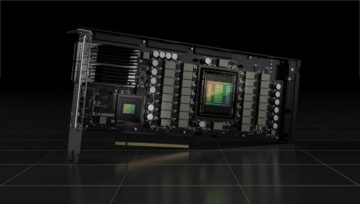
Treasure’s legendary shmup Radiant Silvergun is no ordinary arcade shooting experience, oh no. If you’ve never played Radiant Silvergun, then you’ve never played a shmup like Radiant Silvergun, either. This is a shmup with fully voiced cutscenes, an RPG-like experience system in place of traditional power-ups, a rich orchestral soundtrack composed by Hitoshi Sakimoto of Final Fantasy 12 fame, and a lengthy story that technically encompasses all of human history.
This ambitious grandeur suits the game perfectly. Other shmups are exciting. Radiant Silvergun is—and I don’t use this word lightly—epic.
And so I, a dinosaur of a gamer who still plays this 1998 shmup on a tube TV for insufferable authenticity’s sake, couldn’t have been more nervous about a modern Steam port, out today. So many retro comebacks get things wrong, even when they aim no higher than wrapping the original game up in the first no-brand emulator they can get their hands on. Luckily for all of us Live Wire’s port is—praise the gaming gods—nothing like that. A broad range of customisation options make it easy to tweak the game exactly to my liking, from basic control layouts to multiple HUD types to no less than seven different extra life points thresholds.
I can even give the game more forgiving Ikaruga-style scoring chaining if I like. In the original Radiant Silvergun, to keep a chain going I’d have to pick one colour of enemy and only kill enemies of that colour. In spiritual successor Ikaruga, killing a matched group of three keeps the streak alive, offering the fluidity to bounce between targets.
The graphical settings are even more impressive, even if the various choices available to me have unhelpful names like “HI-RES+EFFECT” with no further description. Because of these painfully basic naming schemes working out exactly what each option does and getting the look I want takes a bit more time than it should, but at least they’re well worth the effort.
When the game’s running in Saturn-style mode, it really does look incredibly close to its 32-bit original. Transparent effects are replaced with their adorably low-tech mesh counterparts, just like Treasure intended. The textures take on the unmistakably gritty look of their Sega-powered counterparts, and every pixel is crystal clear. It feels like I’m back home, even though a few minor details are still slightly off—but they’re the sort of details so minor that they’ll only be spotted by people who’ve either already spent years enjoying the game and will surely continue to do so anyway, or who’ve spent too much time combing the internet for 500% zoom comparison screenshots instead of doing what they should have been doing in the first place, which is getting excited at the thought of being able to play Radiant Silvergun for their PC.
Even the “improved” modern graphics managed to impress me. They paint over the classic art with a new, smoother, look that would normally see me running back to my ageing CDs in a flash. The replaced, rather than blindly upscaled, high resolution sprites can be thoroughly smothered in a whole range of bloom filters and attractively hazy blurs before being topped off with an almost filmic shimmer. They’re a million miles away from the usual “HD” treatment games like this get where everything is made blandly pointy.
The new look helps to give the game a bit of extra theatrical flair—and what could suit this shmup better than an additional dash of drama?
Most importantly, the choice between modern and authentically original graphics is there for me to make. Against all odds, I’m satisfied with this Steam port. Heck, I wouldn’t even mind if it was the first and only version of the game people played in 2023. It feels right. It feels as much fun here as the first time on my Saturn. This port is more than just Radiant Silvergun on my PC without the minor hassle of having to click through an emulator to play it—this port feels like it’s been handled by a team that really does care about bringing the best version of a masterpiece to a modern audience. It’s been looked after every step of the way.
It feels like I’m being looked after, too. Whatever I want, it’s in here. I can make the game look like it’s come straight out of the ’90s if I like, freshened up for 2023, or some custom spot between the two. I can spend hours in the hardcore score attack challenge mode, trying to move my way up the leaderboard. I can practise one segment of one particular stage under specific circumstances until I get it just right. I can knock the difficulty down to Very Easy and just enjoy blowing things up as the original Japanese actors’ voices spill out my speakers, translated subtitles unobtrusively appearing in perfect time with each line.
This is my Radiant Silvergun, however I want Radiant Silvergun to be.
- SEO Powered Content & PR Distribution. Get Amplified Today.
- PlatoData.Network Vertical Generative Ai. Empower Yourself. Access Here.
- PlatoAiStream. Web3 Intelligence. Knowledge Amplified. Access Here.
- PlatoESG. Carbon, CleanTech, Energy, Environment, Solar, Waste Management. Access Here.
- PlatoHealth. Biotech and Clinical Trials Intelligence. Access Here.
- Source: https://www.pcgamer.com/radiant-silvergun-is-finally-on-steam-and-im-thrilled-that-its-pc-port-does-justice-to-one-of-the-best-shumps-of-all-time
- :is
- :where
- $UP
- 12
- 1998
- 2023
- a
- Able
- About
- actors
- Additional
- After
- against
- aim
- alive
- All
- almost
- already
- ambitious
- an
- and
- anyway
- appearing
- Arcade
- ARE
- Art
- AS
- At
- attack
- audience
- authentically
- authenticity
- available
- away
- back
- basic
- BE
- because
- been
- before
- being
- BEST
- Better
- between
- Bit
- blindly
- Bloom
- Blowing
- Blurs
- Bounce
- Bringing
- broad
- but
- by
- CAN
- Can Get
- care
- CDS
- chain
- challenge
- choice
- choices
- circumstances
- classic
- clear
- click
- Close
- Cms
- come
- comparison
- composed
- continue
- control
- could
- couldn
- counterparts
- Crystal
- custom
- Dash
- description
- details
- different
- Difficulty
- dinosaur
- do
- does
- doing
- don
- down
- Drama
- each
- easy
- effects
- effort
- either
- encompasses
- enemies
- enjoy
- Even
- Every
- everything
- exactly
- excited
- exciting
- experience
- extra
- FAME
- FANTASY
- few
- filters
- final
- final fantasy
- Finally
- First
- first time
- Flash
- fluidity
- For
- from
- fully
- fun
- further
- game
- Games
- gaming
- get
- getting
- Give
- going
- grandeur
- graphics
- Group
- handled
- Hands
- hardcore
- Have
- having
- Hazy
- helps
- here
- High
- higher
- history
- Home
- HOURS
- However
- HTTPS
- human
- i
- if
- importantly
- impressive
- improved
- in
- incredibly
- instead
- intended
- Internet
- IT
- ITS
- Japanese
- just
- Justice
- Keep
- Kill
- killing
- least
- legendary
- less
- Life
- like
- Line
- live
- ll
- Look
- look like
- looked
- made
- make
- managed
- many
- masterpiece
- matched
- me
- mesh
- million
- mind
- minor
- Mode
- Modern
- more
- move
- much
- multiple
- my
- names
- naming
- never
- New
- no
- normally
- Odds
- of
- off
- offering
- oh
- on
- ONE
- only
- Option
- Options
- or
- ordinary
- original
- Other
- out
- over
- paint
- particular
- PC
- People
- perfect
- perfectly
- pick
- Pixel
- Place
- plato
- Plato Data Intelligence
- PlatoData
- Play
- played
- plays
- points
- Radiant
- range
- rather
- RE
- really
- replaced
- Resolution
- Retro
- Rich
- right
- running
- s
- sake
- satisfied
- satisfied with
- Saturn
- schemes
- score
- scoring
- screenshots
- seasonal
- see
- segment
- settings
- seven
- shooting
- should
- smoother
- So
- some
- soundtrack
- speakers
- specific
- spend
- spent
- spiritual
- Spot
- Stage
- Steam
- Step
- Still
- Story
- straight
- subtitles
- Suit
- suits
- surely
- system
- T
- Take
- takes
- targets
- team
- technically
- than
- that
- The
- theatrical
- their
- then
- There.
- These
- they
- things
- this
- thoroughly
- though?
- thought
- three
- thrilled
- Through
- time
- to
- too
- topped
- traditional
- translated
- transparent
- treatment
- true
- trying
- tv
- tweak
- two
- types
- under
- until
- us
- use
- usual
- various
- Ve
- version
- very
- VOICES
- want
- was
- Way..
- WELL
- What
- whatever
- when
- which
- WHO
- whole
- will
- Wire
- with
- without
- Word
- working
- working out
- worth
- would
- wouldn
- Wrong
- years
- you
- zephyrnet
- zoom









